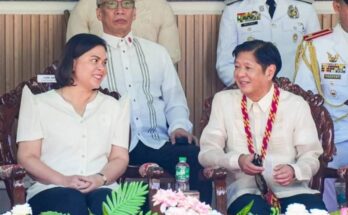WHILE the concept of labor education to promote industrial peace is not new, the new law mandating universities and colleges to integrate labor education into the general education curriculum as an elective is worth taking into serious consideration.
Republic Act No. 1151 also known as Labor Education Act also mandates the Technical Education and Skills Development Authority (Tesda) to include labor education in their training regulations.
The law also indicated that, “the state shall put in place a mechanism to educate future workers, employers, and entrepreneurs, on their rights and responsibilities in promoting harmony in the workplace and social progress in the society.”
With the law, the government is mediating between the traditionally opposing interests of labor and capital through regulations in education. Some in the labor sector may consider this more as intervening in labor affairs. Whatever it is, it must be viewed as an opportunity to promote mutually beneficial industrial peace especially now with the covid pandemic becoming a long-term factor in the lives of Filipinos.
Even before we discuss the form and content of labor education, some kind of unity in vision and values must be developed among the stakeholders: labor, capital and government.
While the 1987 Constitution is deemed encumbered with deficiencies and weaknesses, it remains a source of general principles by which we can agree how to discuss, argue and build common ground for improving the living conditions of the Filipino people. Only a contending political force that has totally rejected being subjected to the Constitution will see otherwise.
The more relevant Constitutional provisions:
Article II State Policies Section 9.
The State shall promote a just and dynamic social order that will ensure the prosperity and independence of the nation and free the people from poverty through policies that provide adequate social services, promote full employment, a rising standard of living, and an improved quality of life.
ARTICLE III State Policies
Section 18. The State affirms labor as a primary social economic force. It shall protect the rights of workers and promote their welfare.
ARTICLE III Bill of Rights
Section 8. The right of the people, including those employed in the public and private sectors, to form unions, associations, or societies for purposes not contrary to law shall not be abridged.
Emilio Jacinto emphasized the value of labor and wrote in his Liwanag at Dilim, “Inibig ng Diyos na tayo’y magtrabaho pagka’t kung tayo’y nilibiran ng buong kailangan at kasaganaan ang aabutin na lamang natin at sukat, tayo’y walang salang lalong malulugmok sa lalong kahamak-hamak at kasuklam-suklam na kabuhayan, na tungo sa pagkalipol ng ating pagkatao.”
While ideological differences cannot easily be settled between labor and capital, Jacinto presented an easily accepted and understood unifying objective for the Filipino nation. Jacinto wrote in no. 8 of his Kartilya, “Ipagtanggol mo ang inaapi; kabakahin ang umaapi.”
Para sa reaksyon o komento at tanong mag-email sa [email protected]





